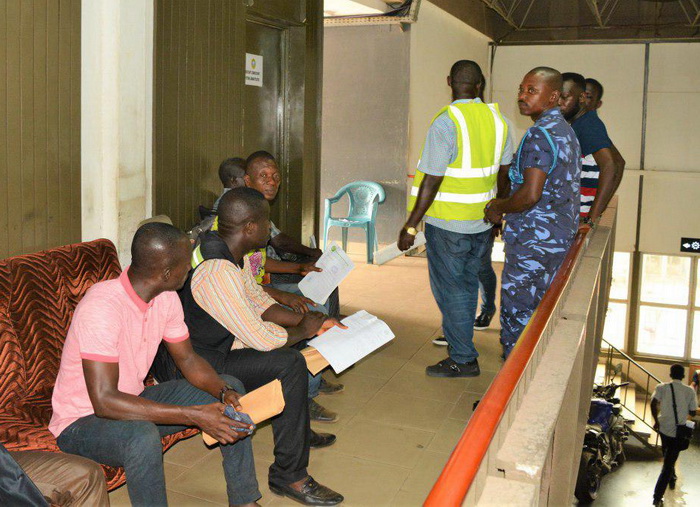
Manual clearance persists at Tema Port
Manual cargo clearance still exists at the Tema Port, despite the introduction of the paperless initiative at the ports.
Advertisement
The introduction of the automation process was to ensure a seamless process but the continued use of paper in many transactions has seen importers and agents questioning the sustainability of the project.
On a daily basis, importers and agents troop to the Customs Documentation Verification Centre, popularly known as the Long Room, to manually process the clearance of imports owing to challenges with data transmission which is said to be causing delays.
A number of agents at the port told the Daily Graphic that some Customs officials continued to demand processed declarations on imports to be printed for manual verification.
According to the Chief Executive Officer (CEO) of Freight Masters Shipping Limited, Mr Richard Nana Amoako, although there had been some significant improvement in certain processes, the delay in data transmission had seen clearing time increased substantially.
Compliance
He pointed out that while agents and importers no longer had physical contact with Customs compliance officers who checked to validate payments before cargo was released, the release of documentation from the compliance centre often came with delays.
“The compliance process or time within which the documentation vetting is done to ensure revenue is paid can take several hours, which also affects the examination time,” Mr Amoako claimed
The compliance process, he said, had reduced to a day or two, as against the previous regime when such verifications took four or five days before an importer or agent could continue the clearance process.
As such, he said, clearance time, which stood at 72 hours prior to the introduction of the paperless process, was still the same.
Similarly, examination and preventive officers at the holding off dock terminal — the Golden Jubilee Terminal (GJT) — also continued to demand for manual validation of payments to enable them to validate payments, he said.
His position was corroborated by the Executive Secretary of the Importers and Exporters Association, Mr Samson Asaki Awingobit, who also indicated that the implementation of the paperless system had come with demurrages.
He was of the view that while the elimination of human interaction was good, delays in compliance procedures, particularly in relation to the Customs Classification Valuation Report (CCVR), were not the best.
Data transmission
Mr Amoako also said the transmission of information through the Joint Inspection and Examination Management System (JIMIS), which served as the interface for joint inspection by stakeholders on cargo leaving the port, also had challenges.
The difficulty, he said, had been attributed to the information technology (IT) service providers, the Ghana Community Network Services Limited (GCNet), and West Blue Consulting (WBC).
That, he stated, had seen examination officers demanding for manual documentation, since they could not access information on the processes on their handy tablets.
Customs
A Co-ordinator of the paperless project at Customs, Mr Emmanuel Gilbert Ohene, on the other hand, told the Daily Graphic that following reports on the slow nature of data transmission, Customs recently held discussions with GCNet and Customs World in an effort to address the challenges.
He explained that the meeting revealed that the systems of the two service providers were not talking to each other, necessitating the need for the two entities to take a second look at their system integration processes.
On time reduction, he stated that the four-hour clearance time was a future projection that the government and its stakeholders wish to achieve should risk management become more robust and functional.
Presently, he said, importers of homogenous goods such as granules, chemicals, plastic tables and chairs were able to clear their consignment within a two-hour window.
“The four-hour clearance time that the Vice-President has been talking about is for the future once importers are compliant, which could ensure that once their imports go through the green channel, they (importers) should be able to clear them within four hours,” Mr Ohene pointed out.
Providers
The Chief Executive Officer (CEO) of WBC, Ms Valentina Mintah, for her part, said although there were initial challenges with the transmission, the various integration points between the company and GCNet had been fully automated and an enhanced monitoring system introduced between the two entities to ensure timely intervention should there be any lapse.
Revenue growth
The government recently announced that the increase in revenue collection at the ports was as a result of the implementation of the paperless policy.
Documents available to the Daily Graphic show that import revenue for the period September 1 to October 22, 2017 stood at GHC1,509,564,392.1, as against the GHC1,043,338,139.97 recorded for the same period in 2016.
Writer’s email: [email protected]



